I'm working on a Lua binding for Windows API. So far I've been able to create a basic window with a list box control:
require('Alien')
package.path = 'libs\\?.lua;libs\\?\\init.lua;' .. package.path
local function printf(...) io.write(string.format(...)) end
Windows = require('Windows')
local W = Windows
print("loaded OK")
print("Command line=", W.GetCommandLine())
local windowClassName = "testWindow"
local windowClass, window
local hInstance = assert(W.GetModuleHandle(nil))
assert(W.WM_CREATE)
assert(W.WM_CLOSE)
assert(W.WM_DESTROY)
assert(W.DefWindowProc)
assert(W.DestroyWindow)
assert(W.PostQuitMessage)
local msgID = {}
for k, v in pairs(Windows) do
if k:match('^WM_') then msgID[v] = k end
end
local function wndProc(hWnd, msg, wParam, lParam)
local id = msgID[msg] or ('%08X'):format(msg)
printf('wndProc(%08X, %20s, %08X, %08X\n',
hWnd,id, wParam, lParam)
if msg == W.WM_CREATE then
printf("window %08X create\n", hWnd)
elseif msg == W.WM_CLOSE then W.DestroyWindow(hWnd)
elseif msg == W.WM_DESTROY then W.PostQuitMessage(0)
else return W.DefWindowProc(hWnd, msg, wParam, lParam)
end
return 0
end
local wndProcCB = alien.callback(wndProc,
assert(W.LRESULT), assert(W.HWND),
assert(W.UINT), assert(W.WPARAM), assert(W.LPARAM))
windowClass = assert(W.WNDCLASSEX:new {
cbSize = assert(W.WNDCLASSEX.size),
style = bit.bor(W.CS_HREDRAW, W.CS_VREDRAW),
lpfnWndProc = assert(wndProcCB),
cbClsExtra = 0,
cbWndExtra = 0,
hInstance = assert(hInstance),
hIcon = nil,
hCursor = nil,
hbrBackground = assert(W.COLOR_APPWORKSPACE)+1,
lpszMenuName = nil,
lpszClassName = assert(windowClassName),
hIconSm = nil,
})
assert(W.RegisterClassEx(windowClass))
local dwExStyle = bit.bor(
W.WS_EX_TOOLWINDOW,
W.WS_EX_OVERLAPPEDWINDOW)
local dwStyle = bit.bor(
W.WS_OVERLAPPEDWINDOW,
W.WS_CLIPSIBLINGS,
W.WS_CLIPCHILDREN)
window = assert(W.CreateWindowEx(
assert(dwExStyle), --dwExStyle
assert(windowClassName), --lpClassName
"Test Window", --lpWindowName
assert(dwStyle), --dwStyle
assert(W.CW_USEDEFAULT), --x
assert(W.CW_USEDEFAULT), --y
420, 314, --width, height
nil, nil, assert(hInstance), nil)) --hWndParent, hMenu, hInstance, lpParam
local SWP_SHOW_ONLY = bit.bor(
W.SWP_ASYNCWINDOWPOS,
W.SWP_SHOWWINDOW,
W.SWP_NOACTIVATE,
W.SWP_NOMOVE,
W.SWP_NOSIZE,
W.SWP_NOZORDER)
W.SetWindowPos(assert(window), nil, 0, 0, 0, 0, assert(SWP_SHOW_ONLY))
local msg = assert(W.MSG:new())
while W.GetMessage(msg, 0, 0, 0) do
W.TranslateMessage(msg)
W.DispatchMessage(msg)
end
It creates and displays a window, but the window doesn't redraw correctly. From the console output I can see lots of WM_PAINT, WM_ERASEBKGND, WM_NCPAINT etc, which I pass on to DefWindowProc, but it seems to be not handling them.
Example screenshots:

When the window first appears, it either takes the image of whatever was behind it (as in this case) or appears solid gray. As it's dragged around, it keeps that image and anything that drags over it leaves behind a ghost image. (Can be seen on the titlebar, where I have a small white button following the active window around.) If I drag it off screen a bit, it starts to get even more glitchy but never successfully repaints itself.
I've tried various methods of handling WM_PAINT, WM_ERASEBKGND, etc but none have had any effect. Examples don't show these messages being handled either. Am I doing something wrong, or is there something else I need to be doing?